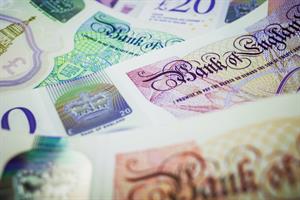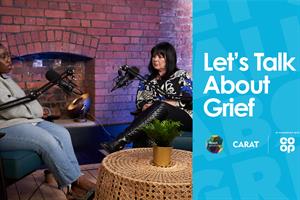

Brand
Apple
"Think Different."
-
Established
1976
-
Number of staff
115,000
-
Head office
Cupertino, US
-
Sector
Technology
Apple "Quiet the noise" by TBWA\Media Arts Lab
Apple "The greatest"
Apple "Escape from the office"
Apple TV+ snubs Jon Hamm from its content library
Apple "Tracked" by TBWA\Media Arts Lab
Milestones
About Apple
It’s easy to forget, as Apple tops all manner of surveys from most-valuable to most-admired brand, that its journey hasn’t always been a smooth one. However, if any brand embodies the ‘fail fast’ or ‘try, try and try again’ mantras, it’s Apple.
Its history is scattered with dismal tales of brand fails, boardroom bust-ups and product flops. Yet its perseverance and passion, especially in the face of adversity, have created icons: the iMac, the iPod, the iPad, to name just three products that have changed, not only Apple’s fortunes, but the entire direction of the industries in which they operate.
The brainchild of school friends and college drop-outs Steve Jobs and Steven Wozniak, it was founded in the surrounds of a garage, on April Fool’s Day in 1976. Its first product release was a computer, the aptly named Apple I.
However, it wasn’t until a year later, with the launch of Apple II, that the company really caught the world’s attention. Or, more specifically, the attention of the soon-to-be loyal legions of workers in design, publishing and biotechnology, who immediately gravitated toward its intuitive, quirky and powerful computers.
Realising the power of this niche, the brand quickly tapped into and exploited a reputation for making computing cool, with its sleek products and proudly proprietary nature. To fuel inspiration on this front, Apple engineers even went on a reconnaissance mission around Silicon Valley in 1980 to sneak a peek at the future of computing – this led to the adoption of even more intuitive, design-led, graphical, user-friendly interfaces.
To much media buzz, Apple floated on the stock market later in 1980, kicking off with an enormous market valuation of $1.8bn, making instant millionaires of those in its corporate ranks.
However, post IPO, the brand started to slide into the doldrums (cue one particularly bad boardroom bust-up, which saw the mercurial Jobs ousted). At times, it looked like the brand may not survive. In 1988, for example, it appeared to focus more energy on taking legal action against Microsoft for copyright infringement than it did on innovation (most points of which, incidentally, were thrown out of court).
It wasn’t until 1998 that the brand began its turnaround with Jobs back at the helm. The brand revival was largely thanks to Jonathan Ive, the British designer who revolutionised the look of Apple Mac and transformed it into its now trademark technicolour appearance.
This wasn’t the only thing that raised eyebrows; the floppy-disc drive was eradicated in favour of a CD drive.
And so Apple was back countering the conventional market and creating culture – something it would continue to do with the launch of the iPod (2001), the iPod Mini (2004), the iPhone (2007), the iPad (2010) and the Apple Watch (2015).
Recently about Apple
Campaign Jobs
-
Marketing Executive (Specialist audiences) £33,825 Smart Energy GB, Goodge Street, London
-
Account Executive / Senior Account Executive - Vibrant PR Agency £competitive Three60 Recruitment, Birmingham, West Midlands
-
Digital Designers - All Levels Negotiable Recruitment Genius, London
-
Account Manager £Competitive + Benefits Guru Careers, City Of London
BUSINESS DETAILS
1 Infinite Loop, Cupertino, CA 95014, USA
www.apple.com/uk
KEY PEOPLE
Philip W. Schiller, senior vice-president, worldwide marketing
Tor Myhren, vice-president of marketing communications
Clay Mills, senior director marcom, EMEIA
Jonathan Ive, chief design officer











.png)

2-4.jpg)



